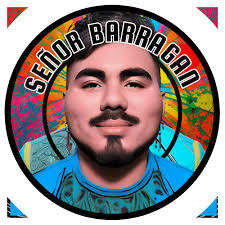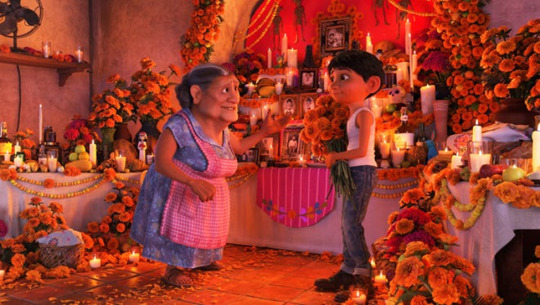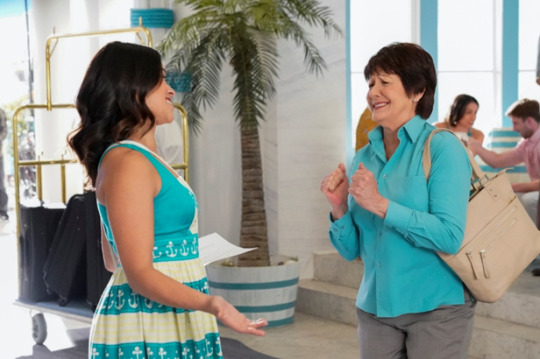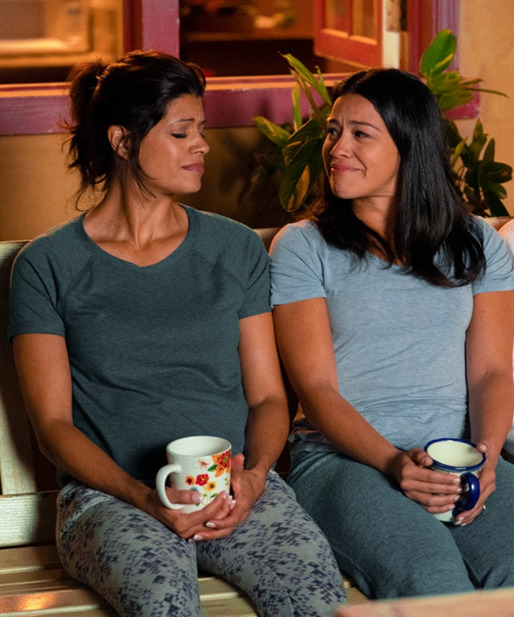Text
Señor_barragan

Senor_barragan is a TikTok and Instagram page run and hosted by Angel Barragan. Angel is a dreamer living in the United States “without papers”. Through DACA, he has been able to receive a college education and has become a school principal in the Bay Area. Mr. Barragan’s social medias consist of a variety of posts including, but not limited to, his own immigration and familial stories, Hispanic and Mexican cultural education, relatable and informing teacher/principal stories, calling attention to Xenophobic people and situations, as well as the connections between these sectors.
youtube
Angel’s videos directly generate conversations, as many of them he encourages input and “thoughts” from viewers. For example, in this video, Mr. Barragan talks about a school who had suspended a student for using the term “illegal alien”, though it was not being directed at an individual. Angel gives his stance as both a principal/teacher, but also as an immigrant to the U.S. He explicitly states that he wants to know other peoples’ thoughts and if they disagree with his own. Many of Mr. Barragan’s videos address the difficult state of our country with immigration laws, the continued colonization of Mexico, and the discrimination faced by people south of the border upon arrival in the U.S. In this PBS news interview, they talk about how, unlike most immigration trends, Latinos have been coming into the United States on a constant trend since the Spaniards arrived. Before the Civil Rights Movement, Latinx people faced much of the same discrimination faced by African Americans. Unfortunately, the biases, prejudices, discrimination, and Xenophobia of both of these groups can still be seen today. Angel works on calling attention to many of these misfortunes and specific instances where they are apparent in our society.
This video in particular was one that caught my attention. The first video that the comment refers to is Angel showing his misspelled name on his principal I.D. A comment was left on the previous video (here) saying that they need proof of him being a principal. Now, this comment could have totally been lighthearted, or the commenter could be shocked by Mr. Barragan being a principal for another reason, but the truth is that many people are wrongfully surprised when ANY person of color holds a high-level position. In Takaki Chapter 12, the book talks about how Mexicans were never expected to receive even a high school education, so as to keep them doing laborious work and keep them out of fields meant for “Anglo society”. This is not something explicitly stated in our society today, but it is still a large misconception that Latinx immigrants, particularly men, don’t or can’t work in educated fields.
In conclusion, Señor Barragan’s social media presence serves as a platform to generate essential conversations and shine awareness on Latinx culture and issues. Through his personal stories, educational insights, and advocacy for marginalized communities, Angel Barragan challenges misconceptions and sheds light on the systemic barriers faced by Latinx individuals in the United States, as well as in Mexico. Angel’s work still proves to be necessary in our world today to foster understanding and break down discriminatory borders in our current world.
“A Different Mirror: A History of Multicultural America.” Choice/Choice Reviews, vol. 31, no. 04, Dec. 1993, pp. 31–2312.
PBS NewsHour. “How Latino Americans Shaped the U.S., Fought for Acceptance.” YouTube, 14 Sept. 2013, www.youtube.com/watch?v=qiieFc4yTyA.
Señor Barragan. “Señor Barragan.” Señor Barragan, senorbarragan.com.
TikTok - Make Your Day. www.tiktok.com/@senor_barragan?lang=en.
0 notes
Text
Coco


Coco is an Oscar-winning animated film produced in 2017. In the past 10 years, there have been major strides by Disney and Pixar to be more inclusive in the Latinx sector. The story follows a young boy named Miguel in Mexico whose dream is to become a musician. On “El día de los Muertos”, or Day of the Dead, Miguel is transported to the Land of the Dead. He is sent on a journey through the Land of the Dead trying to uncover his family’s history while also trying to figure out why his living family has an aversion to music. Coco focuses on the main themes of family and cultural identity, while offering a nuanced portrayal of Mexican culture. It also examines the impact of cultural heritage on personal identity. This clip shows Miguel’s grandmother enforcing her “No music!” rule in the movie, followed by the trailer.
Like “Jane the Virgin”, Coco does a beautiful job of portraying Latinx ethnicities, but more specifically for this movie, Mexican culture. The celebration of Day of the Dead actually was practiced by Indigenous communities in Mexico’s south, as well as other parts of Central America. It is now practiced in other parts of the world, but we primarily see Mexican portrayals of the festivities. Although I have had my fair share of Hispanic studies and have a good grasp of Mexican culture, I wanted to highlight Mexican voices and their thoughts of the film production. This Quora forum focuses on Mexican views of the movie and their feelings about its accuracy. The consensus that I found was that the movie was touching and very relatable for many, and if not relatable in the storyline, it still made them feel a sense of joy that their people were being represented. There were two issues that I saw mentioned a few times that do highlight some inaccuracies in the storyline, which could be contributed to the “Hollywood” lens the movie was made in. For one, Miguel is seen having to pass through a sort of “customs” situation when arriving at the Land of the Dead. When I watched, I thought this was a silly representation, as nobody would think about having to go through a formal policing process when you are passed, but alas, Hollywood must do what they must to create their storyline.

On multiple occasions, the movie references that to cross the bridge to the Land of the Living, the passed people’s families must have a photo set up for them so as they are not “forgotten”, otherwise they are not able to cross. Multiple people said this is just not true, and having a photo up of a relative is not a requirement. Without this “rule” in the movie, though, it wouldn’t have a storyline in the same sense as it did. This video features this concept being explained, as well as having to talk to the security officers at the bridge.
Overall, I think that Coco serves as a great movie to show cultural awareness and display different values and cultural celebrations than we celebrate in the U.S. Not only this, but I believe the movie would help to challenge misconceptions and stereotypes about Mexicans and this holiday, as it is often referred to as an alternative Halloween.
Aguilar, Carlos. “A Gringo’s Guide to the Cultural References in Coco.” Slate Magazine, 29 Nov. 2017, slate.com/culture/2017/11/alebrijes-ofrendas-and-more-mexican-cultural-traditions-in-coco-explained.html.
Entertainment Access. “Miguel’s Grandma Says ‘No Music!’ Scene - COCO (2017) Movie Clip.” YouTube, 30 Mar. 2019, www.youtube.com/watch?v=TF0Y8JImlYQ.
Pixar. “‘Anything to Declare?’ Clip - Disney/Pixar’s Coco - November 22 in 3D.” YouTube, 7 Nov. 2017, www.youtube.com/watch?v=upT1iqrxNBw.
Today, Brian Truitt Usa. “Everything You Need to Know About the Mexican Cultural References in Pixar’s ‘Coco.’” USA TODAY, 21 Nov. 2017, www.usatoday.com/story/life/movies/2017/11/20/everything-you-need-know-mexican-cultural-references-pixars-coco/879113001.
youtube
0 notes
Text
Jane the Virgin
“Jane the Virgin” is a comedy romantic-drama series that focuses on Jane Villanueva, a Mexican/Venezuelan/American young woman living in Miami with her mother and grandmother. Jane has taken after her grandmother’s religious ways, but a medical mistake has left her pregnant as a religious virgin. The storyline relates to representation of Latinx people in media and the adversity that Latinx people face in the name of discrimination in the U.S.

The series in rich Latinx culture and identities, focusing on a multigenerational Latinx family. Not only this, but we also see intersectionality presented between Latinx culture, religion, and especially women. Historically, work in the United States has been segregated, leaving professional positions to white people. For example, “… only 5 percent of the Mexicans were in professional and managerial occupations in 1920…” (Takaki, 2008). Providing contrast to this historic segregation of Latinx work in the U.S., Jane is presented as an independent, educated, and ambitious Latina woman who begins her career as a teacher and ultimately becomes a published writer. An important marker of the identity of these characters is the frequent presence of bilingualism. Jane speaks English with no accent, while also occasionally speaking Spanish at home with her grandmother who speaks very little English. Alba (Jane’s grandma) speaking Spanish here. There is a stereotype in the culture of the U.S. that Hispanics all have an accent when speaking English, which both Jane and her mother contradict. The show features the characters speaking Spanish and English to each other which is refreshing to see in a usual homogenic white English-speaking media. The language “issue” is addressed in “Chapter 61” while Jane’s grandmother is working in the giftshop of a hotel and speaks Spanish to her coworker. A woman overhears and tells her to learn English if she’s in America. Unfortunately, this is not an uncommon situation for many Hispanics living in the U.S., as I know many people who have personally experienced this same situation.

“Jane the Virgin” demonstrates the challenges and resilience of Latinx people in a predominantly white society. On top of this, characters maintain cultural ties and preserve their language, challenging the need of “total assimilation”, or losing their individuality to become more Americanized. The series presents an important Latinx storyline without ever explicitly stating that it is about Latinx representation. It is simply embedded into the show, giving the series an authentic feel that many Latinx communities can relate to (well, at least the principles of the story). “Jane the Virgin” reflect a key concept of our readings, how can visual culture perpetuate or challenge stereotypes? As addressed earlier, the show features a female lead who is educated, accomplished, driven, and professional. The characters also challenge the accent stereotype apparent in our culture. The show does a little bit of perpetuating AND challenging the stereotype of Latinas being hypersexual, as Jane is a religious virgin (at least through most of the show), yet her mother contributes to this hypersexual stereotype. Learn more about this stereotype here.

Lyons, M. (2019, July 31). ‘Jane the Virgin’ Ended Much Like It Began. The New York Times. https://www.nytimes.com/2019/07/31/arts/television/jane-the-virgin-series-finale.html
Romero, A. (2019, August 1). How The Jane The Virgin Finale Gave Us The Happily Ever After We Deserve. Refinery29. https://www.refinery29.com/en-us/2019/07/239345/how-does-jane-the-virgin-finale-ending-season-5-episode-19
Takaki, R. (2008). A different mirror: A History of Multicultural America. Back Bay Books.
Wiki, C. T. J. T. V. (n.d.). Alba and Jane. Jane the Virgin Wiki. https://janethevirgin.fandom.com/wiki/Alba_and_Jane
1 note
·
View note